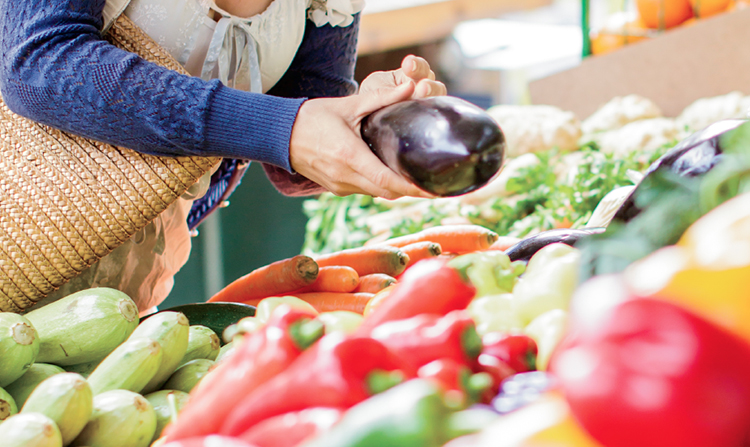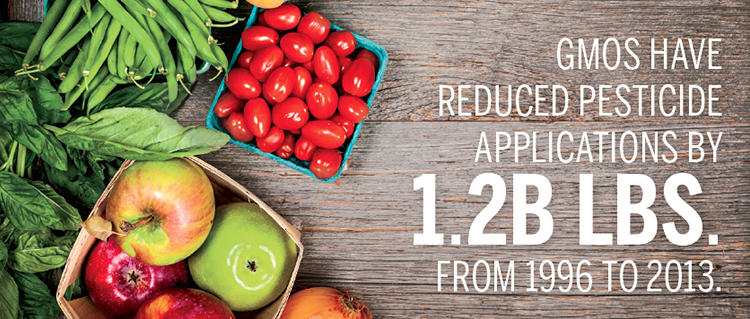Home > Virginia > Virginia Ag Education > Improving Ag Literacy: The GMO Debate
Improving Ag Literacy: The GMO Debate
In partnership with: Virginia Department of Agriculture and Consumer Services

Agriculture affects each of our lives so profoundly, it’s easy to overlook its importance. Take for example, the last time you ate fresh corn – do you remember how easy it was to peel, that it cooked in minutes or was sweet and juicy? The evolution of corn (maize) has come a long way since 7000 B.C. when a distant relative of today’s modern plant was only found in Central America, peeled by hammering and contained only five to 10 very hard kernels per ear. Thanks to years of genetic enhancements, this veggie is an appetizing, worldwide favorite with 200 varieties available in five colors and grown commercially in more than 69 countries.
Through selective breeding, countless fruits, vegetables and other crops have been radically improved since the onset of domestic agriculture 10,000 years ago. Here’s a closer look at the vital role of genetics in agriculture today.
What Is A Genetically Modified Organism (GMO)?
“All agricultural plants and animals through domestication have been genetically modified,” says Dr. Terry Sharrer, former curator of agriculture, Smithsonian Museum of American History. “With traditional breeding, you amplify the expression of all genes, however you also get heightened examples of undesirable characteristics.”
To rectify this, scientists turned to DNA technology, or genetic engineering, in the 1980s. This laboratory process enhanced traditional breeding methods by extracting and inserting a specific, single gene that carries the desired characteristic. Any offspring produced through this process is called a GMO.
The terms GMO and genetic modification (GM) are frequently confused, however. Sharrer clarifies that “genetic modification continues to happen naturally today because plants and animals experience predation. They change the same ways humans do to adapt. It’s evolution.”

GMO Fact Or Myth
GMOs Are Unsafe for Human Consumption
Myth. With the 30th anniversary of GM technology and 2,000-plus studies conducted, research has concluded that GMO foods are as safe as conventional or organic foods. Furthermore, research has uncovered numerous benefits of GMO crops including targeted insect, disease and weed resistance, which decreases the need for pesticides and tilling, causing less stress on the environment.
“There’s nothing inheritably unsafe about GMOs compared to anything else,” says Sharrer, especially considering that chemicals naturally exist in plants and animals. Celery and lima beans, for example, contain natural toxins that could be harmful in high doses, even if they’re labeled non-GMO or organic.
GMOs Can Help Feed a Growing Population by Improving Yields
Fact. “Today’s American farmer feeds about 155 people around the world. As impressive as that is, it is not enough to meet the challenges of a world population headed to 9 billion by 2050,” says Commissioner Sandra J. Adams of the Virginia Department of Agriculture and Consumer Services (VDACS). Add in the fact that less than two percent of the American population is engaged in production agriculture, and the future depends on farmers continuing to use innovation and technology to increase productivity.
Growing two ears of corn where there once was one, GMOs may well hold the key to increasing food productivity. However, consumers’ purchasing decisions will ultimately decide what production methods will be accepted.
GMOs Advance the Interest of Big Business Ethics at the Expense of Family Farms
Myth. “Almost 90 percent of our farms are family-owned and operated, although many family farms are incorporated as a business model,” Adams says. “We need to get the word out on America’s agriculture industry and that we have the safest food supply in the world.”
Undoubtedly, the loss of personal connection with the people who know agriculture best – our farmers – has fueled confusion surrounding modern agricultural practices. While consumers know that staple crops like corn play a significant role providing alternative energy or feeding livestock and people, many aren’t aware that without today’s genetic improvements, food would be more expensive, consume more resources such as land and water and require more inputs to produce.
“Improving agriculture literacy and policy starts (and ends) with the consumer,” Sharrer says. The family farm may be modernized, but it still strives for buyer satisfaction, just as it has since the very beginning.



